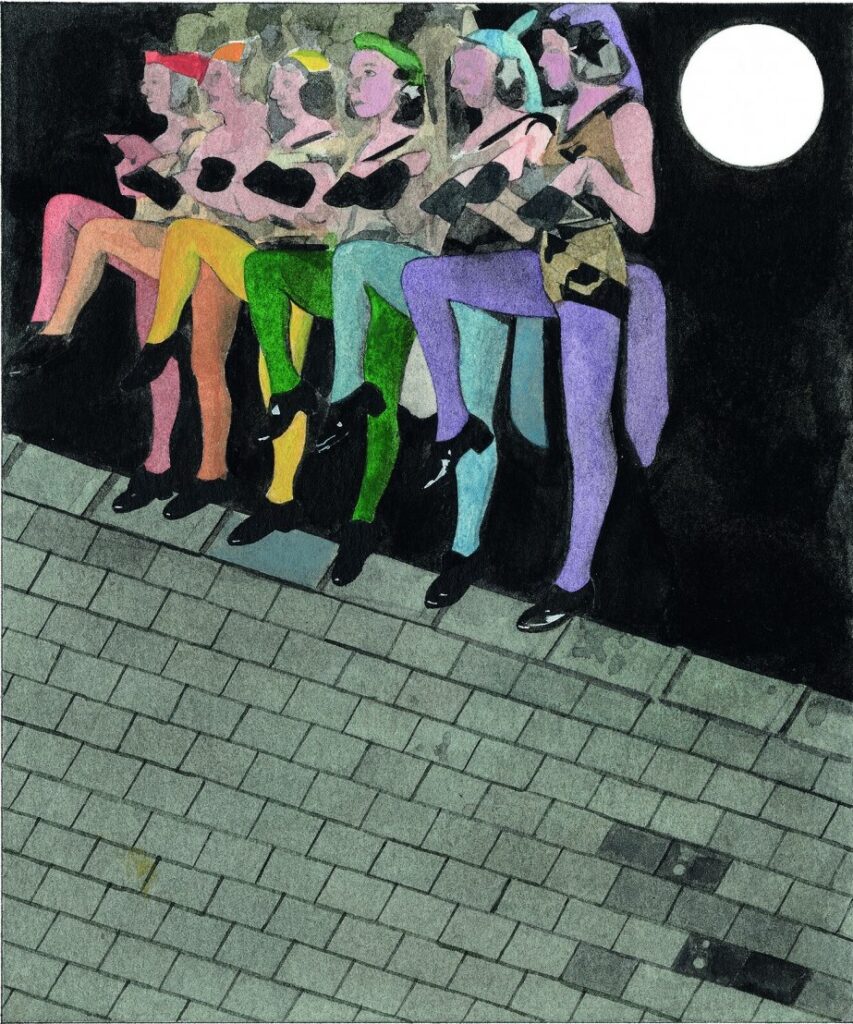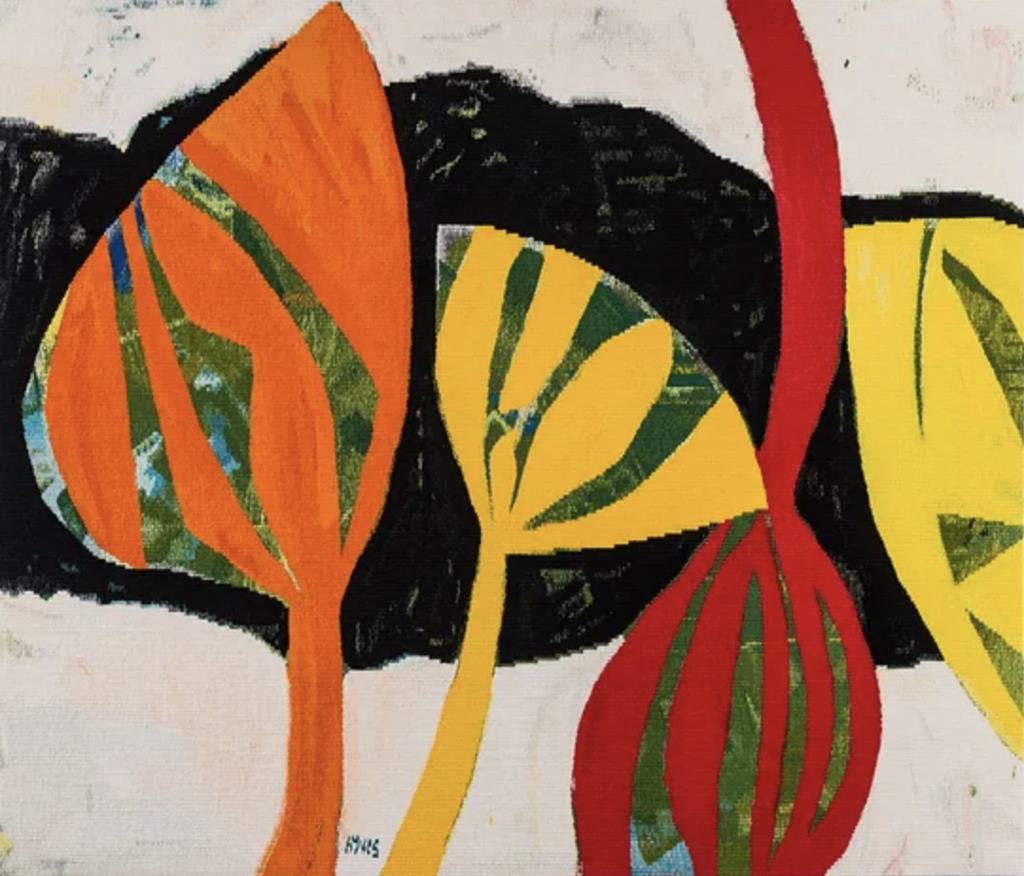
As artists we often look at images for inspiration but the written word has also been a source of ideas for many artists.
In the last century, the imaginative and lyrical use of language of Welsh writer Dylan Thomas, conjured up powerful imagery and ideas for many drawers, painters and print-makers, including Peter Blake and Ceri Richards. In his poetic “play for voices”, Under Milk Wood, completed in 1954, an omniscient narrator invites the audience to listen to the dreams and innermost thoughts of the inhabitants of the small, fictional Welsh fishing town, Llareggub.
In the late 1990’s, when in a drowsy state on a flight from Japan, Peter Blake thought of making watercolour “dream” paintings of Under Milk Wood. He talks about them in this four minute video. His rendering of the dream of Llareggub’s organist Organ Morgan, shown above is titled, “the Women’s Welfare hoofing, bloomered, in the moon”. It is a nocturnal roof-top cabaret routine of multi-coloured dancers which Blake based on a photo of the tiller girls dance troupe performing as horses. He also produced lithographs and drawn portraits of Milk Wood characters, as well as a large number of collages, which Blake also talks about in this three and a half minute video.
Here, Andrew Lycett writes here of Blake’s long-running fascination with Thomas’ play for voices.

Fellow Welshman Ceri Richards had begun to make work inspired by Thomas’ poems much earlier, and continued to do so throughout his career. His 1968 oil on canvas painting; ‘Summer’, subtitled ‘The Force that Through the Green Fuse Drives the Flower’, is from the opening line of a poem by Dylan Thomas of the same title. For Richards, the poem was about the dynamic forces of growth and reproduction underlying nature.
Richards’ works based on this poem, however, are more than illustrations; they produce visual equivalents for the ideas and emotions conveyed by the poem.
To see and read more about Ceri Richards’ work, click here.

Painter Gillian Ayres found inspiration in the rhythms of lyrical poetry. Though best known for her abstract works, her later paintings resemble natural phenomena, such as petals, wings, leaves and stars, referred to in poetry by the likes of William Butler Yeats and Alfred Lord Tennyson.
The image above shows Ayres’ tapestry design, Tirra Lirra, made late in her life and hand woven by master weaver Caron Penney in 2014. It was inspired by Tennyson’s poem of 1842, The Lady of Shalott. The Lady in question was held in a tower and made to weave, separated from the flow of life represented by the river outside, which flowed to Camelot and Lancelot! She escaped, and took a boat down river to find Lancelot but, having thus entered the mortal life, died before she could see him.
You can read the poem here.